Is Hair Loss Reversible?
Table Of Contents
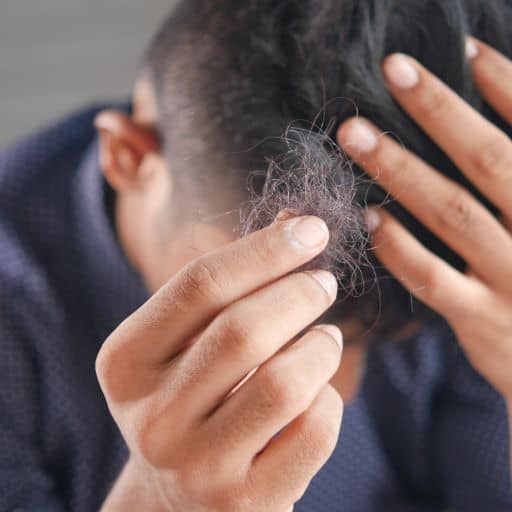
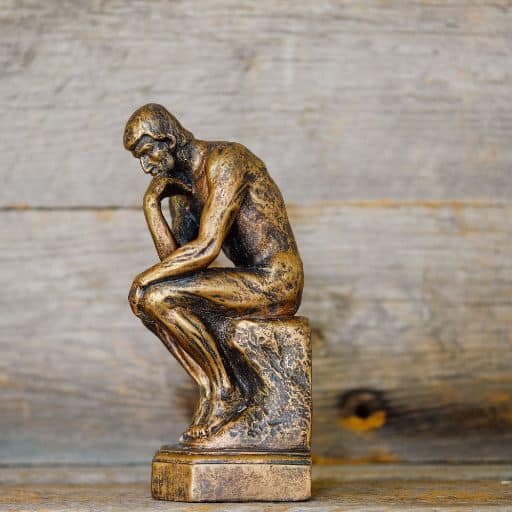


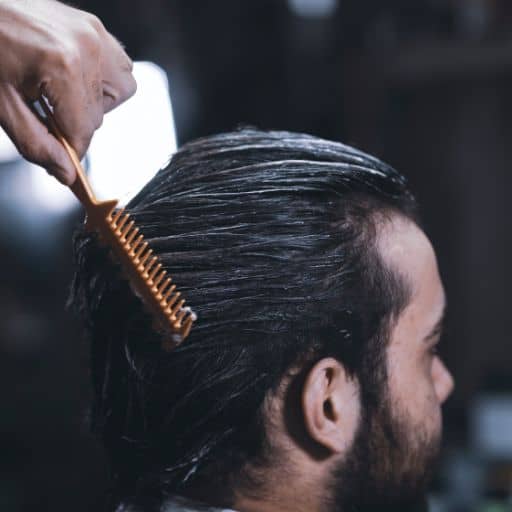



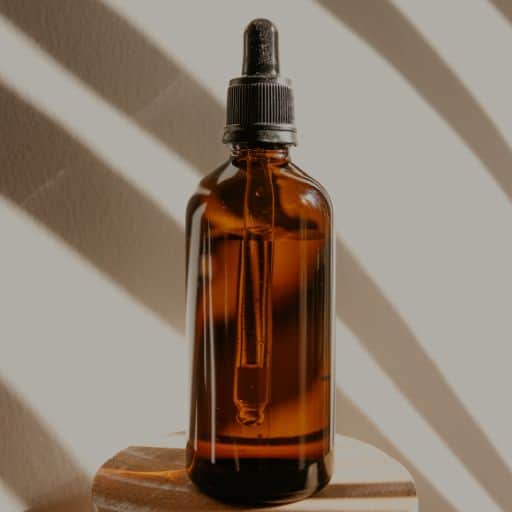

Hair loss: All You Need To Know
What Is Hair Loss?
Hair loss, scientifically known as alopecia, is a common condition that affects both men and women. Although it is often associated with aging, hair loss can occur at any stage of life and for various reasons. Understanding the causes, symptoms, and available treatments for hair loss is crucial for individuals looking to address this issue and potentially restore their hair’s health.
One of the main causes of hair loss is genetics. Pattern baldness, also known as androgenetic alopecia, is the most common form of hair loss and is typically inherited from either the mother or father’s side of the family. This condition occurs due to a hormone called dihydrotestosterone (DHT) which causes the hair follicles to shrink over time, resulting in thinner and weaker hair strands. In addition to genetics, other factors such as hormonal changes, nutritional deficiencies, stress, and certain medical conditions can contribute to hair loss.
Symptoms of hair loss can vary depending on the underlying cause. Some individuals may notice a gradual thinning of their hair, while others may experience sudden and noticeable hair loss in specific areas, such as the crown or temples. Hair loss can also manifest as excessive shedding or increased hair breakage. In more severe cases, bald patches or complete baldness may occur. These symptoms can be distressing, impacting an individual’s self-esteem and overall well-being.
Fortunately, various options are available to treat hair loss. The most common approach is through medication or topical treatments that address the underlying causes and stimulate hair growth. Medications like minoxidil and finasteride have been proven effective in regrowing hair and slowing down the progression of hair loss. Additionally, hair transplantation procedures, such as follicular unit transplantation (FUT) or follicular unit extraction (FUE), can provide a more permanent solution for those seeking to restore their hairline. However, it is essential for individuals experiencing hair loss to consult with a dermatologist or a hair loss specialist to determine the most suitable treatment option based on their specific condition.
In conclusion, whether caused by genetics, hormonal changes, or other factors, hair loss is a common condition that can affect individuals at any stage of life. Recognizing the causes, symptoms, and available treatments for hair loss is crucial for those seeking to address this issue and potentially regain their confidence. With advancements in medical science and specialist treatments, there is hope for individuals facing hair loss to find effective solutions and achieve healthier, fuller hair.
How Common Is Hair Loss?
Hair loss is a prevalent issue that affects a large number of individuals worldwide. While it is commonly associated with aging, it can occur at any age and to both men and women. According to recent studies, approximately half of all men and a significant number of women experience noticeable hair loss by the age of 50. The frequency and severity of hair loss can vary depending on various factors, including genetics, overall health, and lifestyle choices. Although it may be distressing for those experiencing it, it is essential to understand that hair loss is a common phenomenon and there are various effective treatments available to address this concern.
How does Hair Grow?
Hair goes through different phases as part of its natural growth cycle. The first phase is called the anagen phase, where hair actively grows for two to six years. This is followed by the catagen phase, a transitional stage that lasts for a few weeks, during which hair stops growing and detaches from the blood supply. Finally, the telogen phase occurs, when resting hair remains in place for about three months before falling out and being replaced by new hair in the anagen phase. Understanding these phases is crucial for maintaining healthy hair and addressing any concerns related to hair loss or thinning.
Hair phases – anagen (growth), catagen (transition), and telogen (rest), exogen
The anagen phase is when your hair grows—your hair follicle forms a new hair shaft. Most (90%) of the hair on your scalp is in a growing phase that lasts from 2 to 6 years. The catagen phase follows the anagen stage. This is a 1- to 2-week transition stage between anagen and telogen.
nsition of hair cycles is also controlled by DPCs. Secreted proteins such as transforming growth factors (TGF) β1, TGF β2, and dickkopf1 (DKK-1) are known to induce transition from anagen to telogen [4]. When telogen is induced, apoptosis and follicular regression occur throughout the hair follicle

Theories Behind Hair loss?
What Causes Hair Loss?
Hair loss – so complicated – so many theories. Lets get into all of them:

Fibrosis/ calcification of the scalp
Fibrosis
- Dont apply enzymes topically https://pubmed.ncbi.nlm.nih.gov/10565627/
- https://natural-fertility-info.com/fertility-enzyme-therapy
https://pubmed.ncbi.nlm.nih.gov/18286292/
DHT/ hormones
Gravity
Gravity is a fundamental force that affects every object in the universe, including humans. While hair loss is primarily associated with genetic factors, it is interesting to consider how gravity could potentially contribute to this condition. One possible explanation is that due to the constant downward force of gravity, blood flow to the scalp may be reduced over time. This reduced blood circulation might negatively impact the hair follicles, leading to weakened hair growth and eventually hair loss. Additionally, the constant pull of gravity could potentially put stress on the delicate structures within the scalp, causing damage to the hair follicles and inhibiting their ability to produce healthy hair strands.
It is important to note that these ideas are hypothetical and more research is needed to fully understand the relationship between gravity and hair loss. However, by exploring this idea, we can speculate on how gravity, as an omnipresent force, may have an impact on our bodily functions. Understanding the complex interplay between gravity and human biology can provide valuable insights into various physiological processes and possibly guide future research and treatments for hair loss.
Heavy Metals
Hair loss, also known as alopecia, can be a distressing condition affecting millions of people worldwide. While there are various factors that contribute to this issue, one potential cause is the exposure to heavy metals. Heavy metals, such as lead, arsenic, and mercury, are known to have toxic effects on the human body, including the hair follicles. When these metals accumulate in the body over time, they can disrupt the normal functioning of hair growth, leading to hair loss.
The mechanism through which heavy metals cause hair loss is complex and multifaceted. Firstly, heavy metals interfere with the cell cycle of the hair follicles, which are responsible for hair growth. They disturb the delicate balance between the growth phase (anagen), rest phase (telogen), and shedding phase (catagen) of the hair cycle. This disruption can lead to a decreased rate of hair growth and an increase in hair shedding. Additionally, heavy metals exert oxidative stress on the body, causing damage to the cells and tissues including those in the hair follicles. This oxidative stress triggers inflammation, which further hampers hair growth and can eventually result in hair loss. Furthermore, heavy metals can disrupt the hormonal balance in the body. Hormones like testosterone, estrogen, and progesterone play a crucial role in hair growth regulation. When heavy metals disturb these hormonal levels, it can contribute to the disruption of the hair growth cycle and result in hair loss.
In conclusion, heavy metals can have detrimental effects on the hair follicles, ultimately leading to hair loss. Their toxic properties disrupt the normal functioning of the hair growth cycle, cause oxidative stress and inflammation, as well as influence hormonal levels. Further research on heavy metal toxicity and its impact on hair loss is essential to develop prevention strategies and treatments for individuals affected by this condition.
Mitochondrial Dysfunction
Mitochondria dysfunction has been found to play a significant role in hair loss. Mitochondria are the powerhouse of cells, responsible for generating energy in the form of adenosine triphosphate (ATP). Hair follicles, which are responsible for hair growth, require a constant supply of energy to function properly. However, when mitochondria dysfunction occurs, the efficiency of ATP production is compromised, leading to a decreased energy supply for hair follicles. As a consequence, the hair follicles become weaker, resulting in thinner and more brittle hair, ultimately leading to hair loss.
Recent research has shed light on the connection between mitochondrial dysfunction and hair loss. It has been found that mutations in mitochondrial DNA can impair mitochondrial function, disrupting the normal hair growth cycle. Additionally, oxidative stress, which is a result of mitochondrial dysfunction, can negatively impact hair follicles. Oxidative stress occurs when there is an imbalance between the production of reactive oxygen species (ROS) and the body’s ability to neutralize them with antioxidants. Excessive ROS can damage cellular structures, including hair follicles, resulting in hair loss.
In conclusion, understanding the link between mitochondrial dysfunction and hair loss is of utmost importance in developing effective treatment strategies. By targeting mitochondrial function and reducing oxidative stress, potential therapies can be developed to minimize hair loss and promote healthy hair growth. Further research is needed to fully comprehend the mechanisms underlying this connection and to discover novel therapeutic approaches for individuals suffering from hair loss associated with mitochondrial dysfunction.
Mitocondria: https://tusolwellness.com/blogs/tusol/why-is-my-hair-falling-out-the-link-between-your-thyroid-and-mitochondria
https://www.mdpi.com/2079-9284/9/3/47
Head Terrain
https://www.webmd.com/skin-problems-and-treatments/what-are-demodex-mites
- hair mites
- eating and shitting in hair
Hair Mites, scientifically known as Demodex folliculorum, are microscopic arachnids that reside in human hair follicles. Despite their minuscule size, these mites play a significant role in the overall health of our skin. College-level studies have shed light on the complex relationship between hair mites and our bodies, revealing intriguing details about their behavior, reproductive cycle, and potential implications for various skin conditions.
Research suggests that hair mites are likely commensal organisms, meaning they typically coexist harmlessly with humans. These mites feed on sebum, the oily substance that our skin produces, and dead skin cells, providing a cleaning service as they consume debris. However, if the balance between mites and their host is disrupted, problems may arise. For instance, an overpopulation of hair mites has been associated with inflammatory skin conditions such as rosacea and blepharitis. Understanding the intelligence and comprehension of college students regarding hair mites involves delving deeper into their life cycle, behavior, and the potential role they play in skin disorders.
Head shape
Hair loss is a complex issue that can be influenced by numerous factors, including head shape. The shape of one’s skull can potentially contribute to hair loss through various mechanisms. One possible explanation is that individuals with certain head shapes may have a higher risk of developing conditions such as traction alopecia. Traction alopecia occurs when constant tension or pulling on the hair follicles leads to damage and subsequent hair loss. If someone has a head shape that causes the hair to be constantly pulled in a specific direction or in tight hairstyles, it could increase the risk of this condition and, ultimately, contribute to hair loss.
Additionally, head shape might also play a role in the progression of androgenetic alopecia. This common form of hair loss is primarily caused by a combination of genetic and hormonal factors. Although head shape itself does not directly cause androgenetic alopecia, it could potentially influence the distribution of hair loss. For instance, individuals with a more rounded or convex skull shape may notice more significant hair thinning at the crown area, while those with a flatter or more concave shape may experience hair loss at the front or temples. Understanding how head shape relates to the specific patterns of hair loss associated with androgenetic alopecia could contribute to improved diagnosis and treatments tailored to individual patients.
Calcification
Calcification hair loss, also known as permanent alopecia, is a complex condition where the hair follicles are gradually replaced by calcium deposits, resulting in irreversible hair thinning and loss. This phenomenon is thought to be caused by chronic inflammation and subsequent fibrosis within the scalp tissues, leading to the disruption of normal hair growth cycles. While the exact mechanisms behind calcification hair loss are not yet fully understood, ongoing research suggests that factors such as genetic predisposition, hormonal imbalances, and environmental triggers may contribute to the development of this condition. Further investigation into the underlying mechanisms and potential therapeutic approaches is crucial to provide effective interventions for individuals experiencing this distressing type of hair loss.
Fibrosis+ calcification
- Transdermal magnesium study https://www.ncbi.nlm.nih.gov/pmc/articles/PMC5579607/
For the calcification inhibitors, there’s…
- fetuin-A
- matrix gla protein
- osteopontin
- osteoprotegerin
- and dozens of others
Calcification – Chrome dome – ivory dome
- Does magnesium break down calcification?
- Magnesium has been shown to effectively prevent vascular calcification associated with chronic kidney disease. Magnesium has been hypothesized to prevent the upregulation of osteoblastic genes that potentially drives calcification
Fibrosis
- Dont apply enzymes topically https://pubmed.ncbi.nlm.nih.gov/10565627/
- https://natural-fertility-info.com/fertility-enzyme-therapy
Fibrosis is a pathological condition characterized by the excessive accumulation of fibrous connective tissue in an organ or tissue. It occurs as a result of chronic inflammation, tissue injury, or an ongoing repair process in response to various insults such as infections, toxins, or autoimmune reactions. The excessive formation of fibrous tissue replaces the normal architecture of the affected organ, impairing its function and potentially leading to organ failure.
The progression of fibrosis involves a complex interplay of different cell types and factors, primarily mediated by fibroblasts, the main cell responsible for collagen production in connective tissues. In a healthy setting, tissue repair and remodeling are regulated by a delicate balance between degradation and synthesis of the extracellular matrix (ECM). However, in fibrosis, this balance is disturbed, leading to the overproduction and accumulation of collagen fibers. This excessive collagen deposition creates scar tissue, stiffening the affected organ and disrupting its normal structure and function. Understanding the mechanisms behind fibrosis is crucial for developing targeted therapies to alleviate its effects and ultimately restore organ homeostasis.
Hair loss Theory Conclusion
Hair loss is a complex phenomenon with numerous contributing factors, making it an intricate and fascinating field of study. Various causes, including genetics, hormonal imbalances, nutritional deficiencies, medical conditions, and certain lifestyle choices, can all play a role in hair loss. Understanding the intricate interplay between these factors requires extensive research and scientific inquiry. Researchers in the field of trichology devote their efforts to unraveling the complexities of hair loss, aiming to develop effective treatments and preventive measures. Thus, acknowledging the multifaceted nature of hair loss allows for a comprehensive understanding that can lead to advancements in this area of study.
Takeaways and thoughts from these theories:
- Anti androgens is not the only basis of treating hair loss. Weak hair roots become sensitive and susceptible to multiple factors. Whereas, strong hair roots can stand for any cause. Hair loss is multifactorial
- Calcification can be reversed
- Heavy metals can be detoxed
- Fibrosis seems to be inflammation based – can antioxidants reverse this?
- Head mites can be controlled with antifungals
- DHT must play a role as women deal with all the factors above but much less incidence of hair loss – DHT causing more inflammation, fibrosis, decreasing blood flow?

Hair Loss Drugs On The Market
Dutasteride
Dutasteride is a medication primarily used to treat benign prostatic hyperplasia (BPH), a non-cancerous enlargement of the prostate gland that can cause urinary problems in men. It belongs to a class of drugs called 5-alpha-reductase inhibitors, which work by blocking the activity of an enzyme involved in the production of a hormone called dihydrotestosterone (DHT). By reducing DHT levels, dutasteride helps to shrink the prostate gland and relieve symptoms such as frequent urination, weak urine flow, and difficulty starting and stopping urination.
Although dutasteride can be an effective treatment for BPH, it is important to be aware of its potential risks. One significant risk associated with this medication is its potential to cause birth defects. Pregnant women or those planning to become pregnant should avoid handling dutasteride capsules, as even a small amount can be absorbed through the skin and potentially harm a developing fetus. Other potential risks include decreased sex drive, erectile dysfunction, and decreased semen production. While these side effects may not affect all users, they should be discussed with a healthcare professional before starting treatment. Additionally, dutasteride has been linked to an increased risk of high-grade prostate cancer. Regular monitoring is recommended to detect the potential development of such cancer, especially in individuals with a family history of prostate cancer.
Finasteride
Finasteride is a medication primarily used to treat an enlarged prostate gland, a condition called benign prostatic hyperplasia (BPH). It belongs to a class of drugs known as 5-alpha-reductase inhibitors, which work by blocking the conversion of testosterone into dihydrotestosterone (DHT), a hormone responsible for prostate growth. Furthermore, finasteride is also prescribed to treat male pattern hair loss, also known as androgenetic alopecia. By reducing DHT levels, it helps to prevent hair loss and promote hair regrowth. While the drug has shown significant efficacy in treating these conditions, it is important to consider the potential side effects associated with its use.
One common side effect of finasteride is sexual dysfunction, which may include a decrease in sex drive, difficulty achieving or maintaining an erection, or a reduction in the volume of semen released during ejaculation. These effects are generally reversible upon discontinuation of the medication; however, some individuals may experience persistent symptoms even after stopping treatment. Other less common side effects may include breast tenderness or enlargement, allergic reactions, and mood changes such as depression or anxiety. It is crucial for individuals considering or currently using finasteride to consult with their healthcare provider to understand the potential risks and benefits, as it may not be suitable for everyone. Additionally, it is recommended to regularly monitor for any adverse effects during treatment to ensure optimal health outcomes.
Minoxidil
Minoxidil is a medication primarily used to treat hair loss. As a college student, I understand the importance of maintaining a certain appearance and the impact it can have on one’s self-confidence. Minoxidil works by increasing blood flow to the hair follicles, thus promoting hair growth. It is available in both liquid and foam forms and is applied directly to the scalp twice daily.
Minoxidil is believed to work by widening blood vessels and opening potassium channels, which allows more oxygen, nutrients, and blood to reach the hair follicles. This increased blood flow stimulates hair growth and prolongs the growth phase of the hair follicles, ultimately leading to thicker and fuller hair. However, it is important to note that minoxidil is typically more effective in treating hair loss on the top of the scalp rather than receding hairlines or complete baldness. Regular and consistent use of minoxidil is necessary to maintain the positive effects, as discontinuing use may lead to a gradual return of hair loss.
Minoxidil is an antihypertensive agent, which opens an ATP-sensitive K+ channel, whereas finasteride is a 5α-reductase
Minox – VEGF increase https://onlinelibrary.wiley.com/doi/abs/10.1046/j.1365-2133.1998.02115.x
Minox with microneedling https://www.ncbi.nlm.nih.gov/pmc/articles/PMC6371730/
Minox WNT https://www.sciencedirect.com/science/article/abs/pii/S0923181111000521
Mainstream Medication Conclusion
- Finasteride and Dutasteride side effects aren’t worth the risks
- Blocking DHT/5 alpha reductase is a helpful way to prevent hair loss
- Minoxidil works by targeting multiple avenues of hair growth (some misunderstood)- perhaps this can be replicated using herbs

Hair Research
I started my research by reading successful hair studies – these led me to discovering how different herbs, vitamins, and minerals affect cell signaling
Article: https://www.sciencedirect.com/science/article/abs/pii/S0378874120305250
One of the best articles: https://www.mdpi.com/2075-1729/12/11/1856#B83-life-12-01856
Good Study: https://www.mdpi.com/2079-9284/9/6/118
https://touroscholar.touro.edu/cgi/viewcontent.cgi?article=1010&context=sjlcas
Rob: https://perfecthairhealth.com/the-ultimate-hair-loss-flowchart-why-we-lose-our-hair/
These are the pathways i found backed by studies

Pathways Influence On Hair Stages
Diagram 1 Photo Credit
Reducing Inflammation

Inflammation is a complex biological response in the body that occurs when tissues are damaged or affected by harmful stimuli. It is a crucial part of the body’s defense mechanism, aiming to protect and heal the affected area. However, chronic inflammation can have adverse effects on various bodily processes, including hair health and growth.
Hair loss, also known as alopecia, can be influenced by inflammation. Inflammation disrupts the normal hair growth cycle, leading to a condition known as cicatricial alopecia. This type of hair loss occurs when inflammation damages hair follicles, resulting in their permanent destruction and subsequent inability to produce new hair. Furthermore, inflammation can also impact the balance of the scalp’s microbiome, the collection of microorganisms that reside on our skin. Disruptions in the microbiome can contribute to conditions such as dandruff and seborrheic dermatitis, which can further exacerbate hair loss.
Overall, it is essential to understand the link between inflammation and hair loss. While inflammation is a natural response of our bodies, chronic inflammation can significantly impact hair health and contribute to various forms of alopecia. By identifying and addressing the underlying causes of inflammation, such as certain medical conditions or lifestyle factors, individuals can take proactive steps to mitigate hair loss and promote overall scalp health.
antioxidants can reduce TGF-1
Activating WMT/b-catenin
The Wnt/β-catenin pathway is a signaling pathway that plays a crucial role in various cellular processes, including embryonic development, tissue homeostasis, and cancer progression. This pathway is activated by the binding of Wnt ligands to Frizzled receptors on the cell surface, leading to the stabilization and accumulation of β-catenin in the cytoplasm. In the absence of Wnt ligands, β-catenin is phosphorylated by a destruction complex, consisting of proteins such as Axin, APC, GSK-3β, and CK1, which targets it for degradation via the ubiquitin-proteasome system. However, when Wnt ligands are present, they inhibit the activity of the destruction complex, resulting in the accumulation of β-catenin in the cytoplasm.
Once stabilized, β-catenin translocates into the nucleus, where it interacts with transcription factors of the TCF/LEF family to activate the expression of Wnt target genes. These target genes are involved in a wide range of cellular processes, including cell proliferation, differentiation, and survival. Dysregulation of the Wnt/β-catenin pathway has been implicated in various diseases, particularly cancer. In some cases, mutations or alterations in key components of this pathway can lead to the constitutive activation of β-catenin, promoting uncontrolled cell growth and tumorigenesis. Understanding the intricacies of the Wnt/β-catenin pathway provides valuable insights into the molecular mechanisms underlying normal development and disease progression, and may contribute to the development of targeted therapeutic interventions in the future.
https://www.bmbreports.org/journal/view.html?doi=10.5483/BMBRep.2022.55.11.081
Novel therapeutics ways for the management of hair loss and alopecia improving hair-follicle proliferation and reducing hair-loss need new targets (Figure 2). These targets include, matrix metalloproteinases (MMPs), extracellular signal-regulated protein kinase (ERK), and Janus-activated kinase (JAK), the activation of the proliferation by WNT/Dickkopf homolog 1 (DKK1), sonic hedgehog (Shh), vascular endothelial growth factor (VEGF), apoptosis inhibition by transforming growth factor-beta (TGF-β).
Upregulating SHH

Sonic – can make new hairs… big for balding
- https://elifesciences.org/articles/46756
The Sonic Hedgehog (SHH) gene is a critical component in embryonic development and has garnered significant attention in the field of molecular biology. Named after the popular video game character, this gene plays a vital role in pattern formation and organ development, primarily in the nervous system and limbs. SHH is a member of the hedgehog family of signaling proteins and is responsible for regulating cell growth, cell differentiation, and cell survival during early stages of development.
The SHH gene was discovered in the early 1990s and has been extensively studied ever since. It is expressed in various tissues during embryogenesis, releasing the Sonic Hedgehog protein, which signals neighboring cells to adopt specific fates. Through a complex signaling pathway, the SHH protein acts as a morphogen, specifying the identities of different cell populations and coordinating the growth and patterning of tissues and organs. Mutations in the SHH gene can lead to severe developmental defects, such as holoprosencephaly, a condition characterized by abnormalities in the brain and facial features. Understanding the intricate mechanisms of the Sonic Hedgehog gene is crucial for gaining insights into embryonic development and potentially guiding therapeutic interventions for associated disorders.
https://www.ncbi.nlm.nih.gov/pmc/articles/PMC6163201/
SHH down regulated diminishes hair growth
Increasing VEGF
VEGF, or vascular endothelial growth factor, plays a significant role in hair growth. This protein is responsible for stimulating the growth of blood vessels, which are crucial for nourishing hair follicles. VEGF promotes the proliferation of endothelial cells, ensuring a robust blood supply to the hair follicles. Furthermore, it has been observed that VEGF also assists in the anagen phase, which is the active hair growth phase. During this phase, VEGF helps in extending the duration of hair follicle growth, resulting in longer and thicker hair strands. Consequently, this protein has become a vital target for hair loss treatments and may hold the key to combating various forms of hair loss.
Numerous studies have examined the effects of VEGF on hair growth, demonstrating its potential as a therapeutic agent. For instance, scientists have discovered that introducing additional VEGF directly into the scalp can enhance hair regrowth by promoting new blood vessel formation. This experimental approach holds promise for individuals suffering from conditions like alopecia areata, androgenic alopecia, and other forms of hair loss, as VEGF could potentially stimulate hair follicles that have become dormant. Furthermore, researchers are investigating various methods to increase the expression of VEGF naturally, such as through the use of specific medications or natural compounds. By understanding the role of VEGF in hair growth and utilizing this knowledge to enhance its expression, scientists may uncover groundbreaking treatments for hair loss, providing hope for those facing this common aesthetic concern.
VEGF is really low in androgenic alopecia
https://healthlibrary.brighamandwomens.org/Library/NutritionalSupplements/Herbs/167,vegf
This test measures the amount of vascular endothelial growth factor (VEGF) in your blood. VEGF is a substance that helps encourage the growth of new blood vessels. Your body makes more VEGF in certain cases. For instance, if your tissues aren’t getting enough oxygen, they may make more VEGF so that new blood vessels grow to
bring in more oxygen. Your lungs contain VEGF because good blood flow is vital there.
https://www.ncbi.nlm.nih.gov/pmc/articles/PMC199257/
JAK (Janus Kinase) Inhibitors
JAK inhibitors block the Janus Kinase enzymes – These enzymes are known to cause arthritis and other inflammation based diseases. By blocking these enzymes we can help modulate the immune system and control the cytokine storm. Cytokines cause cell death so by reducing cytokines we reduce cell loss. This is good for hair growth. – https://en.wikipedia.org/wiki/Janus_kinase_inhibitor
we show that pharmacological inhibition of JAK-STAT signaling initiates the hair cycle in normal mice and promotes growth of hair follicles in humans. https://www.science.org/doi/10.1126/sciadv.1500973
Jak kinase inhibition
- https://www.ncbi.nlm.nih.gov/pmc/articles/PMC6481137/
- https://www.cuimc.columbia.edu/news/blocking-enzymes-hair-follicles-promotes-hair-growth
- JAK (Janus Kinase) inhibitors (may increase IGF-1 ) iGF-1 low in miniaturized hair
- Herbs: Cryptotanshinone, Icaritin, and Indirubin
- Cryptotanshinone (CPT), as a major component of Salvia miltiorrhiza Bunge (Danshen)
DHT & 5 Alpha Reductase Blocking
Dihydrotestosterone (DHT) has long been implicated in the complex process of hair loss. As a hormone derived from testosterone, DHT is deemed to play a crucial role in pattern hair loss, also known as androgenetic alopecia. College-level understanding of this issue requires a grasp of the intricate biochemical mechanisms involved. Essentially, hair loss occurs when hair follicles become more sensitive to DHT. Once testosterone is converted into DHT by the enzyme 5-alpha-reductase, hair follicles shrink over time under the influence of DHT. This shrinking process, known as miniaturization, leads to the progressive thinning of hair strands until they eventually stop growing. Scientists believe that this is due to DHT binding to androgen receptors in hair follicles, resulting in a reduction of blood flow and essential nutrients to the follicles. Moreover, DHT also shortens the growth phase of the hair cycle, leading to a gradual decline in the production of new hair.
To comprehend the relationship between DHT and hair loss thoroughly, it is vital to consider the genetic component of hair follicle sensitivity. Certain individuals possess a genetic predisposition to produce higher levels of 5-alpha-reductase and androgen receptors that are more susceptible to DHT binding. These genetic variations increase the likelihood of developing androgenetic alopecia. Furthermore, the distribution of hair follicles affected by DHT differs in males and females. In males, DHT primarily targets the frontal and temporal regions, leading to a receding hairline and eventually a horseshoe-shaped pattern of hair loss. Conversely, in females, DHT-induced hair loss generally presents as a diffuse thinning over the crown area. Importantly, the impact of DHT on hair loss can vary among individuals due to genetic, hormonal, and environmental factors. Thus, understanding the complex role of DHT in hair loss provides college students with a foundation to explore potential therapeutic strategies to tackle this prevalent issue.
DHT role
- https://men-elite.com/2021/07/11/why-dht-doesnt-cause-hair-loss/
- https://www.clubroots.com/blogs/hair-loss/insulin-like-growth-factor-igf-1
Vasodilation
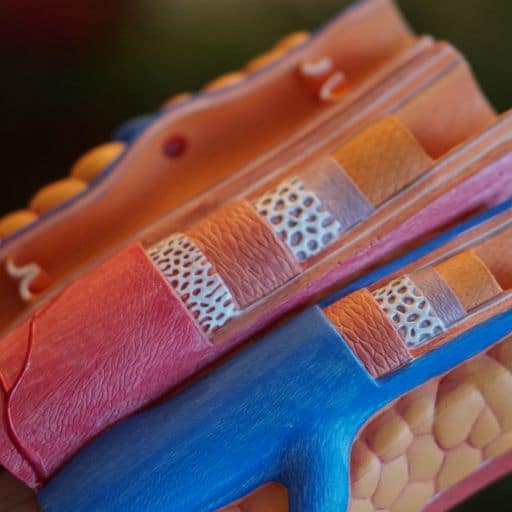
A vasodilator refers to a substance or medication that causes the relaxation and dilation of blood vessels in the body. This process results in an increased blood flow to various tissues and organs. When it comes to hair growth, vasodilators play a significant role as they enhance blood circulation to the hair follicles. This increased blood supply means that essential nutrients and oxygen are effectively transported to the hair follicles, promoting healthier hair growth. Additionally, vasodilators can improve the delivery of hair growth-related hormones and enzymes to the scalp, stimulating the production of new hair and aiding in the maintenance of existing hair.
Hair growth is a complex biological process that relies on several factors, including genetics, hormones, and overall health. While vasodilators can improve blood circulation to the scalp, leading to positive effects on hair growth, it is essential to address other underlying causes that may restrict hair development. For instance, hormonal imbalances, nutritional deficiencies, and scalp conditions may hinder the effectiveness of vasodilators. Therefore, a comprehensive approach that combines a healthy lifestyle, balanced diet, proper hydration, and adequate hair care practices alongside vasodilators can maximize their potential benefits for promoting hair growth.
- In support of this, research has found that men with early Male-Pattern Baldness (MPB) have subcutaneous blood flow that is 2.6 times less than their healthy counterparts (7). Also, balding parts of their scalp have less blood flow compared to healthy parts (the back and sides of the head). Healthy men without hair loss show no such differences. https://www.hairguard.com/best-vitamins-that-can-block-dht/
Mitochondria Boosters
Mitochondria boosters have gained significant attention in recent years due to their potential to enhance energy levels and improve overall health. Mitochondria, often referred to as the powerhouse of the cell, play a vital role in generating adenosine triphosphate (ATP), the molecule responsible for energy production. Numerous natural compounds, such as coenzyme Q10, alpha-lipoic acid, and resveratrol, have been identified as potential mitochondria boosters. These substances work by supporting the production of ATP, as well as by protecting the mitochondria from oxidative stress and enhancing their functioning. While there is ongoing research to fully understand their mechanisms and effectiveness, mitochondria boosters have shown promising results in improving physical endurance and combating age-related decline.
One of the key benefits of mitochondria boosters is their potential to enhance physical performance. By optimizing energy production, these supplements can improve the efficiency of ATP synthesis, thereby increasing stamina and reducing fatigue. This has great implications for athletes and individuals engaged in regular exercise, as they can experience improved endurance, enhanced recovery, and better overall performance. Furthermore, mitochondria boosters have been linked to slowing down the aging process, as mitochondrial dysfunction has been associated with age-related diseases. By enhancing mitochondrial function and reducing oxidative stress, these compounds have the potential to promote longevity and improve cellular health. However, it is important to note that more research is needed to determine the optimal dosage and long-term effects of mitochondria boosters, as well as to identify potential side effects or contraindications.
Vitamins and Minerals
Minerals and vitamins play a crucial role in maintaining the optimal functioning of cells within the human body. These micronutrients are essential for various cellular processes, ranging from energy production to DNA synthesis. Minerals such as calcium, magnesium, and potassium are involved in maintaining cell membrane potential, which is vital for the transmission of nerve impulses and muscle contraction. Additionally, vitamins like vitamin C and E act as antioxidants, protecting cells from oxidative damage caused by free radicals. They also support immune function, promoting the body’s defense against infections and diseases.
Minerals are necessary for the proper functioning of enzymes, which are essential for cellular metabolism. For instance, iron is a key component of hemoglobin, the protein responsible for transporting oxygen in red blood cells. Without adequate iron levels, cells would not receive sufficient oxygen, leading to fatigue and impaired function. Similarly, vitamins are essential for cellular energy production. B vitamins, such as thiamine and riboflavin, are essential in converting food into energy through various metabolic pathways. Deficiencies in these vitamins could impair cellular energy metabolism, resulting in symptoms like weakness and poor cognitive function.
Overall, minerals and vitamins are indispensable for cellular health and function. Through their involvement in crucial cellular processes, they help maintain the integrity of cells and promote overall well-being. A balanced diet that includes a variety of nutrient-rich foods is a key strategy in ensuring an adequate intake of these essential micronutrients and targeted supplements.
Theory – https://www.sciencedirect.com/science/article/pii/S0306987717310411

Topical Or Oral
Topical
https://www.ncbi.nlm.nih.gov/pmc/articles/PMC8151591/
size: https://pubmed.ncbi.nlm.nih.gov/10839713/#:~:text=We%20argue%20that%20the%20molecular,cannot%20pass%20the%20corneal%20layer.
under 500 daltons or 500g/mol will be absorbed through the skin
Topical Glycerol vs ethanol https://www.ncbi.nlm.nih.gov/pmc/articles/PMC8160696/
- glycerin will extract the following – sugars, enzymes (dilute), glucosides, bitter compounds, saponins (dilute), and tannins
- absolute alcohol will extract the following – alkaloids (some), glycosides, volatile oils, waxes, resins, fats, some tannins, balsam, sugars, and vitamins.[5]
Herbs and their constituent compounds treat alopecia through various mechanisms. They prolong the anagen phase, accelerate the transition from the telogen phase to the anagen phase, and inhibit the transition from the anagen phase to the catagen phase by inducing proliferation of the hair
Oral

Hair Growth Ingredients
Herbs & Flavonoids
Astragulus

Baikal Skullcap
Scutellaria baicalensis, also called Baikal skullcap, is a flowering plant of the family Lamiaceae. The extract contains baicalin (flavonoid) and acts by the androgen receptor antagonistic effect. It prevents androgenetic alopecia and proliferates dermal papilla cells [103]. ( bad at topical absorption)
Bhringaraj Eclipta Alba
Eclipta alba, also known as False Daisy or Bhringraj, is an herbaceous plant widely recognized for its significant medicinal properties. With its origins in India and parts of Southeast Asia, Eclipta alba has been traditionally used in Ayurvedic medicine to treat a range of ailments. This potent herb exhibits numerous benefits, including its potential as a liver tonic, hair rejuvenator, anti-inflammatory agent, and hepatoprotective agent against various liver disorders. Moreover, Eclipta alba shows promise in enhancing memory and cognitive functions, making it a valuable asset to combat neurodegenerative diseases. Its rich phytochemical composition and robust antioxidant activity contribute to its overall therapeutic efficacy. As modern research continues to unravel the myriad of benefits associated with Eclipta alba, it holds immense promise in the realm of natural medicine while paving the way for novel treatments and preventive approaches.
Study: https://www.hindawi.com/journals/bmri/2014/319795/
http://msfullhair.com/eclipta-alba-bhringraj-for-hair-growth-reviews/#4_Studies_on_using_eclipta_alba_bhringraj_for_hair_growth Interestingly, compositions of eclipta alba between the
petroleum ether extract and the ethanol extract showed very different phytochemical compounds:
- Petroleum ether extract: wedelolactone and sterols – b-sitosterol (showed the best hair growth results)
- Ethanolic extract: carbohydrates, flavonoids and glycosides
The researchers note that b-sitosterol and wedelolactone appear to be the major contributors for promoting hair growth effects. In the case of b-sitosterol, it was completely absent in the ethanolic extract of eclipta alba.
- Bhringaraj https://vedix.com/blogs/articles/bhringraj-for-hair, https://ugro.com/eclipta-alba-hair-treatment-potential-natural-alternative-hair-loss/
- https://examine.com/supplements/bhringaraj/research/#aQNmN2q-interactions-with-aesthetics_aQNmN2q-hair
Cilantro Leaf

Cilantro leaf, scientifically known as Coriandrum sativum, is a fundamental herb extensively used in various global cuisines for its distinctive flavor and aroma. With a vibrant green appearance, this versatile leaf offers numerous health benefits. Rich in vitamins A, C, and K, cilantro leaf is an excellent source of antioxidants, helping to protect the body against harmful free radicals. Additionally, it contains essential minerals like iron, potassium, and manganese, which contribute to maintaining overall optimal health. Moreover, cilantro leaf possesses natural anti-inflammatory properties, aiding in the prevention of chronic diseases such as heart disease and arthritis. Its detoxifying attributes are renowned, as cilantro leaf assists in the elimination of heavy metals like lead and mercury from the body, promoting a healthier internal system. Combining unique flavor, abundant nutrition, and multifaceted advantages, cilantro leaf is undoubtedly a valuable addition to any diet.
Study: https://pubmed.ncbi.nlm.nih.gov/31311306/
EGCG
EGCG, also known as epigallocatechin gallate, is a potent antioxidant and one of the main active compounds found in green tea. Its beneficial properties have attracted considerable attention from researchers and health enthusiasts alike. Not only does EGCG possess remarkable free-radical scavenging abilities, but it also exhibits anti-inflammatory, anti-cancer, and neuroprotective effects.
The antioxidant activity of EGCG plays a crucial role in combating oxidative stress, which has been linked to various chronic diseases such as cardiovascular disorders and cancer. EGCG’s ability to neutralize free radicals helps protect cells from damage and may contribute to longevity. Additionally, studies have revealed its potential in reducing inflammation, a key factor in the development of several diseases. Researchers have also identified EGCG’s anticancer properties, as it has been found to inhibit tumor growth and induce cancer cell death. Moreover, EGCG has shown promising results in protecting brain cells from degeneration, which makes it a potential therapeutic option for neurodegenerative disorders such as Alzheimer’s and Parkinson’s diseases. With its wide range of health benefits, EGCG continues to be an intriguing subject of study, and its incorporation into one’s diet is often recommended to promote overall well-being.
- EGCG has been proven to inhibit alpha reductase enzyme [10]. The hair growth promoting property what we have seen for Phyllanthus emblicahttps://juniperpublishers.com/jojdc/pdf/JOJDC.MS.ID.555565.pdf
Study: https://www.diviofficial.com/blogs/ingredients/green-tea-extract-hair-growth-science
Blood Flow https://www.sciencedirect.com/science/article/abs/pii/S0955286316300912
Jak inhibitor https://www.ncbi.nlm.nih.gov/pmc/articles/PMC7226503/
Calcification: http://www.diva-portal.org/smash/get/diva2:823438/FULLTEXT01.pdf
VEGF Decrease: https://academic.oup.com/jn/article/132/8/2307/4687786
Ginkgo Biloba
Gingko Biloba, also known as maidenhair tree, is a natural supplement derived from the leaves of the gingko tree. It has been used for centuries in traditional Chinese medicine and is now gaining popularity worldwide for its numerous health benefits. One of the key advantages of gingko biloba is its ability to enhance cognitive function. Various studies have shown that consuming gingko supplements can improve memory, concentration, and overall mental performance. It is believed that the active compounds in gingko biloba help increase blood flow to the brain, providing it with more oxygen and nutrients, which in turn supports optimal brain health and function.
Aside from its cognitive benefits, gingko biloba also possesses antioxidant properties, making it a valuable aid in combating oxidative stress and inflammation. These properties are particularly beneficial for older individuals who may experience age-related memory decline and cognitive impairment. Moreover, gingko biloba has been associated with improved circulation, as it helps to dilate blood vessels, promoting blood flow throughout the body. This can potentially enhance cardiovascular health, reduce the risk of certain chronic diseases, and even alleviate symptoms of conditions such as tinnitus and vertigo. However, it is worth noting that individual results may vary, and it is always recommended to consult with a healthcare professional before incorporating any new supplement into one’s routine.
Study: https://www.hairloss-research.org/emu-oil-regenerates-skin-and-hair-follicles-even-in-burns-2/
Ginseng
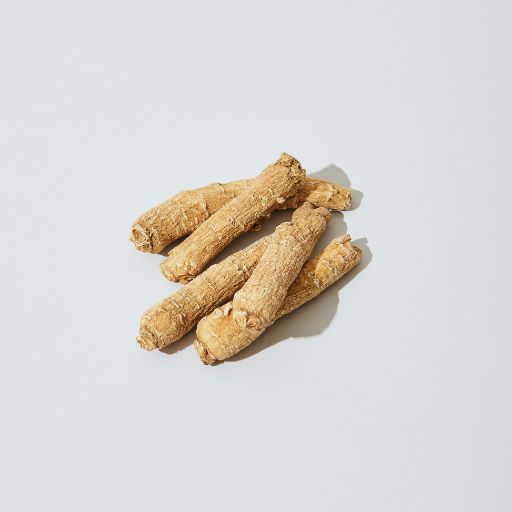
Ginseng, known as Panax ginseng, is a traditional herbal remedy and popular medicinal plant in various Asian cultures. It is native to parts of China, Korea, and Siberia and has been used for thousands of years due to its numerous health benefits. Ginseng is renowned for its adaptogenic properties, meaning it helps the body adapt to physical and mental stress. Additionally, it is thought to boost energy levels, improve cognitive function, and enhance overall well-being.
One of the key benefits of ginseng is its ability to enhance mental performance and cognitive function. It is believed to stimulate brain cells and improve memory and concentration. Research suggests that ginseng may have a positive impact on psychological well-being by reducing stress levels and promoting a sense of calmness. Moreover, ginseng is thought to increase energy levels and combat fatigue, making it a suitable supplement for individuals experiencing physical or mental exhaustion. Furthermore, this traditional herb is known for its potential anti-inflammatory and immune-boosting properties, possibly contributing to improved overall health.
https://www.frontiersin.org/articles/10.3389/fphar.2022.1077249/full
Jak inhibitor: https://pubmed.ncbi.nlm.nih.gov/23041701/
Blood FLow https://www.ncbi.nlm.nih.gov/pmc/articles/PMC7468881/
Calcification https://academic.oup.com/cardiovascres/article/117/3/930/5815559
Anti inflammatory: https://www.ncbi.nlm.nih.gov/pmc/articles/PMC3659612/
https://www.intechopen.com/chapters/76168
Good article: https://www.ncbi.nlm.nih.gov/pmc/articles/PMC9058829/
Mitochondria
As many of you probably know, DHT is a hormone that was originally testosterone, but is converted due to an 5a-reductase enzyme.
The more inflammatory reaction occurs in the scalp, the higher DHT level is seen in the balding scalps, provoking a vicious cycle for pattern hair loss sufferers.
He Shou Wu
HE Shou Wu, also known as Fo-Ti, is a traditional Chinese herb that has gained recognition worldwide for its various health benefits. Derived from the root of the Polygonum multiflorum plant, HE Shou Wu has been used for centuries in traditional Chinese medicine to enhance vitality and improve overall well-being. This herb is widely popular for its powerful antioxidant properties, which help combat oxidative stress and neutralize harmful free radicals in the body. Furthermore, HE Shou Wu is believed to promote healthy aging and longevity by supporting the functions of the liver and kidneys, which play a vital role in detoxification and excretion of waste products from the body.
In addition to its antioxidant effects, HE Shou Wu is also praised for its potential to boost hair growth and combat hair loss. It is believed to stimulate the production of melanin, which imparts color to the hair, thereby preventing premature greying. Moreover, HE Shou Wu is thought to increase blood circulation to the scalp, promoting healthy hair follicles and ultimately leading to thicker and stronger hair. Besides hair benefits, this herbal remedy is also favored for its potential to support healthy sexual function, enhance fertility, and improve overall reproductive health. However, it is crucial to note that while HE Shou Wu holds significant promise in promoting various health benefits, further research is still required to understand its mechanisms of action and potential side effects.
Study: https://pubmed.ncbi.nlm.nih.gov/21419834/
SHH and WNT https://pubmed.ncbi.nlm.nih.gov/21419834/
Mitochondria VEGF DHT https://www.ncbi.nlm.nih.gov/pmc/articles/PMC7218528/
Indica Extract
Indica extract prevents hair loss as well as stimulate hair growth by regulating the Wnt-β-catenin, JAK3-STAT6, and TGF-β1-Smad signaling pathways, and may be further developed as a novel functional cosmetic for preventing hair loss.
Morus Alba

The researchers treated HFDPCs with M. alba root extract (MARE), which contains chlorogenic acid and umbelliferone, and is not cytotoxic to HFDPCs at a concentration of 20%. They found that MARE enhanced the activation of β-catenin, a growth factor which is crucial for inducing the anagen phase, in HFDPCs
Morus alba, commonly known as white mulberry, is a plant species native to China but widely cultivated across the world. This deciduous tree possesses numerous benefits, which make it highly regarded in traditional medicine and horticulture. Firstly, the leaves of Morus alba are rich in bioactive compounds such as flavonoids, phenolics, and alkaloids, which exhibit strong antioxidant properties. These antioxidants help combat oxidative stress and reduce the risk of chronic diseases such as diabetes, cardiovascular diseases, and certain types of cancer. Secondly, the fruit of Morus alba is not only delicious but also provides essential nutrients including vitamins A, C, E, and K, as well as minerals like potassium and magnesium. Consumption of this fruit can promote overall health by boosting the immune system, improving digestion, and aiding weight loss. Lastly, Morus alba is valuable in sericulture, as it serves as the primary food source for silkworms, supporting the silk industry. Overall, the diverse benefits of Morus alba underscore its significance in various fields ranging from health and nutrition to industry and agriculture.
blood flow increase https://www.tandfonline.com/doi/full/10.1080/13880209.2018.1424210
Pea Sprout Extract
Our study has now shown that the application of a fluid containing 2% pea sprout extract on a defined scalp zone of 10 volunteers enhances the expression of defined genes relevant for hair, namely fibroblast growth factor-7 (FGF7) and noggin, by 56 and 85%
Peppermint
Peppermint oil has gained popularity in the world of hair care due to its numerous benefits. Known for its invigorating and refreshing properties, peppermint oil stimulates hair growth by increasing blood circulation to the scalp. Additionally, this essential oil helps to balance the scalp’s oil production, preventing both dryness and excessive greasiness. Its soothing and cooling effects provide relief from itchiness, inflammation, and dandruff. Peppermint oil also imparts a pleasant aroma to the hair, leaving it smelling fresh and rejuvenated. With its impressive array of benefits, peppermint oil serves as a versatile and effective solution for achieving healthy and lustrous hair.
Pomegranate leaf
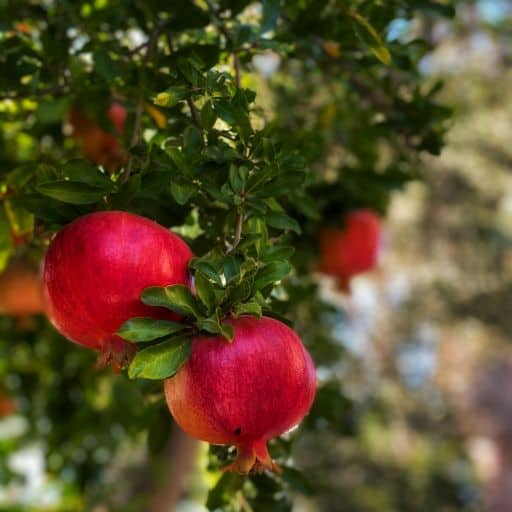
Pomegranate leaves are the foliage of the pomegranate tree, scientifically known as Punica granatum, and have been used for centuries in traditional medicine due to their various health benefits. These leaves are rich in bioactive compounds such as tannins, flavonoids, and phenolic acids, which possess potent antioxidant and anti-inflammatory properties. Consuming pomegranate leaf extract or infusions has been linked to a range of potential advantages, including improved heart health by reducing cholesterol levels and increasing blood flow, as well as enhanced immune system function and reduced risk of chronic diseases such as cancer and diabetes. Moreover, the high levels of polyphenols found in pomegranate leaves can help maintain healthy digestion, treat diarrhea, and alleviate symptoms of inflammatory bowel diseases. The antimicrobial properties of pomegranate leaves have also demonstrated potential in fighting against harmful bacteria and fungi, making them useful in promoting oral health and preventing infections. In addition, some studies suggest that pomegranate leaf extracts may have neuroprotective effects and could potentially aid in the prevention and treatment of neurodegenerative disorders such as Alzheimer’s disease. Overall, pomegranate leaves offer a wealth of health benefits that make them an excellent addition to one’s diet or supplement routine, supporting overall well-being and longevity.
SHH down : https://www.ncbi.nlm.nih.gov/pmc/articles/PMC8875200/
Quercetin
Quercetin, a flavonoid compound widely found in plants and foods such as fruits, vegetables, and grains, has garnered substantial attention due to its potential health benefits. As a graduate school student, I comprehend that quercetin exhibits an array of advantageous properties. Firstly, it possesses potent antioxidant properties, effectively scavenging harmful free radicals and protecting our cells from oxidative stress, which is implicated in aging and various chronic diseases. Secondly, quercetin exhibits anti-inflammatory activities by inhibiting the production of inflammatory molecules, thereby mitigating inflammation-related disorders like cardiovascular diseases and arthritis. Additionally, research suggests that quercetin could enhance cardiovascular health by reducing blood pressure levels and improving blood lipid profiles. Moreover, quercetin has been associated with cancer prevention and suppression due to its ability to inhibit the growth of cancer cells. Lastly, this compound has shown promise in enhancing exercise performance by increasing mitochondrial biogenesis and improving endurance capacity. In conclusion, the versatile nature of quercetin makes it a fascinating subject of study, offering valuable therapeutic potential in combating various health issues, promoting well-being, and enhancing overall quality of life.
Red sage
Red sage, scientifically known as Salvia miltiorrhiza, is a perennial herb native to China with a rich history of medicinal use. This ancient botanical treasure contains active compounds, such as salvianolic acid and tanshinone, which have been shown to possess a plethora of health benefits. Its potent antioxidant and anti-inflammatory properties make it a sought-after herb in traditional Chinese medicine, as it aids in enhancing cardiovascular health, reducing oxidative stress, and improving blood circulation. Moreover, red sage has shown potential in treating conditions such as hypertension, dyslipidemia, and ischemic heart diseases. With its extensive therapeutic applications, it is no wonder that red sage continues to be highly valued as a natural remedy among health-conscious individuals and researchers alike.
Rosemary
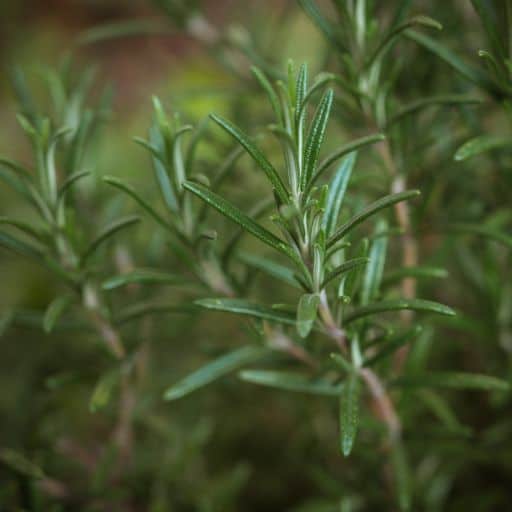
Rosemary, scientifically known as Rosmarinus officinalis, is a fragrant evergreen herb that holds a significant place in both culinary and medicinal practices. Its distinct aroma and distinct needle-like leaves make it a popular ingredient in various dishes, particularly in Mediterranean cuisine. Rosemary not only adds a delightful flavor to culinary creations but also provides an array of health benefits. Rich in antioxidants, this herb possesses anti-inflammatory properties that may aid in reducing inflammation within the body. Additionally, rosemary has been linked to improved digestion, enhanced cognitive function, and potential cancer-fighting abilities due to its high content of compounds like rosmarinic acid, carnosic acid, and caffeic acid. Notably, its fragrance is believed to alleviate stress and anxiety, promoting relaxation and mental well-being. Due to its myriad of advantages, rosemary has garnered attention and continues to be used both as a flavor-booster and a natural remedy in many cultures worldwide.
There is a difference between rosemary oil and rosemary extract though.
Which is why I don’t recommend rosemary oil as a one stop shop for regrowing hair
Shallot Extract
https://www.mdpi.com/2223-7747/11/11/1499
Stinging Nettle
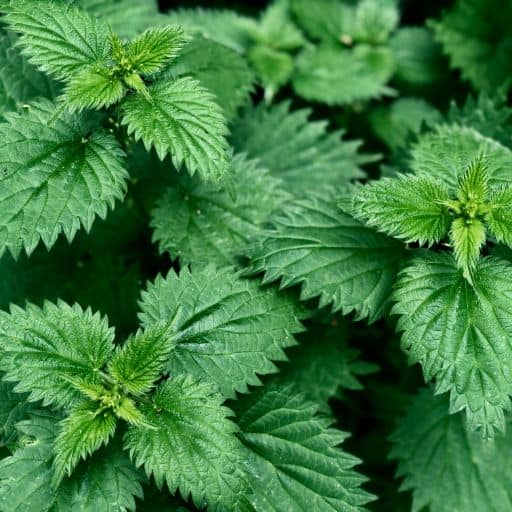
Vitamins & Minerals
CoQ10

Coenzyme Q10, commonly known as COQ10, is a natural compound found within our bodies that play a crucial role in cell energy production. COQ10 is mainly concentrated in organs that require high energy levels, such as the heart, liver, and kidneys. Additionally, it acts as an antioxidant that protects cells from damage caused by harmful free radicals. A number of studies suggest that COQ10 supplements may provide various health benefits, such as improving heart health, boosting energy levels, and reducing the risk of chronic diseases.
One of the significant benefits of COQ10 is its positive impact on cardiovascular health. Research has shown that COQ10 supplementation may help reduce the risk of heart diseases by improving endothelial function, decreasing inflammation, and enhancing overall heart function. This compound can also lower blood pressure and improve circulation, two factors that contribute to a healthy heart. Furthermore, COQ10 has been found to enhance exercise performance by increasing energy production and reducing fatigue, making it a popular supplement among athletes and individuals who seek to improve their physical endurance. Moreover, COQ10’s antioxidant properties help neutralize harmful free radicals, preventing oxidative damage and reducing the risk of chronic diseases such as cancer, Parkinson’s disease, and Alzheimer’s disease.
In conclusion, COQ10 is an essential compound that contributes to overall cell energy production and acts as an antioxidant within our bodies. Its benefits range from promoting heart health and improving cardiovascular function to boosting energy levels and reducing the risk of chronic diseases. Consequently, COQ10 supplementation can be a valuable addition to a person’s overall health and well-being.
Study: https://onlinelibrary.wiley.com/doi/abs/10.1111/j.1468-2494.2008.00451_5.x
Iodine
Iodine, a chemical element with the symbol I and atomic number 53, is a vital nutrient for human health with numerous benefits. Primarily known for its role in the production of thyroid hormones, iodine plays an essential role in regulating metabolism and promoting overall growth and development. Additionally, iodine acts as a powerful antioxidant that can protect the body against free radicals and oxidative stress. Adequate intake of iodine is particularly crucial during pregnancy and early childhood as it supports proper brain development and cognition. Furthermore, iodine deficiency can lead to various health issues, including goiter, cognitive impairments, and hypothyroidism. Therefore, ensuring sufficient iodine levels through proper dietary sources or supplementation is crucial for maintaining optimal health and well-being.
Fulvic Minerals
Fulvic minerals are a type of organic substances that can be found in the soil and are often extracted from humus, which represents the decayed organic matter. These minerals are formed through the decomposition of various plant and animal materials over an extended period. Due to their small molecular size and complex structure, fulvic minerals are highly bioavailable, meaning they can easily be absorbed by living organisms, such as plants and humans. This property allows the minerals to transport essential nutrients, such as vitamins, minerals, and amino acids, to cells throughout the body, promoting optimal health and supporting various physiological functions.
The benefits of fulvic minerals are diverse and significant. Firstly, they enhance the body’s ability to absorb nutrients from food and supplements by improving digestion and assimilation. Fulvic minerals also help detoxify the body by binding and removing heavy metals and toxins, which can accumulate in tissues and organs over time. Additionally, these minerals support the immune system by stimulating the production of enzymes, antioxidants, and anti-inflammatory substances that help protect the body against diseases. Fulvic minerals have also been found to boost energy levels, improve mental clarity and focus, support healthy aging, and promote balanced hormone levels. Overall, the incorporation of fulvic minerals into one’s diet can lead to improved overall well-being and increased vitality.
Absorption Study: https://www.ncbi.nlm.nih.gov/pmc/articles/PMC6151376/
Magnesium
Magnesium is an essential mineral that plays a crucial role in the overall functioning of the human body. Understanding the benefits of magnesium can significantly enhance overall health and well-being.
Magnesium aids in numerous physiological processes, such as regulating blood pressure, improving bone health, and enabling proper muscle and nerve function.
Furthermore, it contributes to energy production, assists in DNA synthesis, and supports the immune system. Additionally, magnesium is very good at balancing calcium and decalcifying tissues
MSM
Methylsulfonylmethane, commonly known as MSM, is a naturally occurring compound found in plants, animals, and humans. It is characterized by its sulfur content, which is essential for various biological processes in the body. MSM has garnered attention in recent years due to its potential health benefits. Research suggests that MSM acts as an anti-inflammatory agent, providing relief for conditions like arthritis and joint pain. Furthermore, it has been reported to improve exercise performance, enhance skin health, support hair growth, and aid in the detoxification process. Although more studies are needed to confirm these claims, the potential benefits of MSM make it an enticing alternative for overall wellness and an area of interest for further investigation.
Silica
Vitamin B6
Use of vitamin b6 for enlarging subnormal hair bulbs and enhancing hair growth therefrom
Abstract
VITAMIN B6, APPLIED TOPICALLY TO THE SCALP, IS FOUND TO ENLARGE SUBNORMAL HAIR BULBS, THEREBY INCREASING HAIR DIAMETER, STRENGTH AND BODY. ON APPLICATION TO WOMEN”S SCALPS TOPICALLY WITH ESTROGENS, ESTROGENICALLY REVIVED HAIR BULBS ARE SO ENLARGED AND THEIR GROWTH SO ENHANCED AS TO PRODUCE HAIRS OF NORMAL CHARACTERISTICS.
Amino Acids
Taurine
When it comes to pattern baldness, a particular concern is the calcification of the scalp tissues. This occurs as a result of long-term follicle miniaturization which leads to poor blood circulation.
As a free amino acid, taurine is unique. This amino acid is found abundantly in tissues, and particularly within skeletal muscles (9).
Taurine has a few roles, including 1) calcium channel modulation; and 2) antioxidant activity.
As mentioned, scalp calcification is a serious concern for people with pattern baldness. This occurs as a result of long-term balding, and it can mean death to the hair follicles if not treated quickly.
Calcification is the process by which large calcium deposits exist on the scalp. These calcium deposits result in toughening of the skin which further contributes to the decline of a hair follicle’s growth capabilities.
If left untreated, calcification will result in fibrosis which is the permanent hardening of the tissues.
Taurine is a calcium channel modulator. It maintains appropriate calcium homeostasis (10).
While the body manufactures taurine naturally, it will use it in areas where calcium homeostatis is most critical to life (e.g. heart, brain). So how can you benefit from taurine’s calcium-modulating effects on the scalp? By using it as part of your hair care routine.
Protects against TGF-B https://www.hairguard.com/taurine-for-hair/#:~:text=Taurine%20is%20also%20highly%20efficient,the%20follicle%20needs%20to%20survive.
https://pubmed.ncbi.nlm.nih.gov/18489269/
L-Lysine
Lysine, an essential amino acid, is one of the building blocks of proteins, necessary for growth and maintenance of body tissues. This amino acid cannot be synthesized in the human body and hence must be obtained through diet or supplements. Lysine plays a crucial role in various physiological functions, including collagen synthesis, calcium absorption, and the production of certain enzymes, hormones, and antibodies. Additionally, lysine is thought to possess antiviral properties, aiding in the management and prevention of herpes simplex virus (HSV) outbreaks. Overall, lysine is a vital component of a balanced diet, ensuring proper growth, development, and overall health.
Glycine
Glycine is a nonessential amino acid that plays a crucial role in the functioning of the human body. As the simplest and smallest amino acid, glycine is involved in the synthesis of proteins, DNA, and neurotransmitters. It acts as a neurotransmitter itself, regulating communication between nerve cells and promoting a healthy nervous system. Additionally, glycine has been found to have a range of other important functions, including enhancing sleep quality, reducing inflammation, and promoting healthy immune and digestive systems. With its diverse roles, glycine proves to be a vital compound impacting various bodily functions, making it an essential component for overall well-being.
Glutamic Acid
Glutamic acid is a non-essential amino acid that plays a crucial role in various biological processes. It is involved in the synthesis of proteins, acts as a neurotransmitter in the central nervous system, and plays a vital role in the metabolism of cells.
Carnitine
Carnitine is an essential compound that plays a crucial role in the conversion of fat into energy. This naturally occurring substance is synthesized within the human body and can also be obtained through dietary sources such as meat, fish, and dairy products. Carnitine acts as a transporter, shuttling fatty acids into the mitochondria, the powerhouses of cells, where they are subsequently converted into usable energy. Furthermore, this compound has been extensively studied for its potential health benefits, including promoting heart health, facilitating weight loss, and improving exercise performance. With its vital function in energy metabolism and its potential therapeutic uses, carnitine emerges as a noteworthy substance contributing to overall well-being.
Arginine
Arginine is a semi-essential amino acid that plays a crucial role in various biological processes. It is classified as semi-essential because while the body can produce arginine to meet its basic needs, certain situations, such as growth periods or illness, may require additional dietary intake. Arginine acts as a building block for proteins and is necessary for the synthesis of nitric oxide, a molecule that helps dilate blood vessels, improve blood flow, and maintain cardiovascular health. Additionally, arginine is involved in hormone production, wound healing, immune function, and the removal of toxins from the body. This versatile amino acid can be obtained from various dietary sources including meat, dairy products, nuts, and legumes, making it an important nutrient for overall health and well-being.
WNT – https://www.google.com/search?q=arginine+wnt+catenin&ei=qbGyZPbfKp-sptQP5NuJqAs&oq=arginine+wnt+cate&gs_lp=Egxnd3Mtd2l6LXNlcnAiEWFyZ2luaW5lIHdudCBjYXRlKgIIAjIFECEYoAEyBRAhGKABMgUQIRigATIFECEYoAFI8W1QghFY1VBwAngBkAEAmAFtoAHgBqoBAzYuM7gBAcgBAPgBAcICChAAGEcY1gQYsAPCAggQABiKBRiRAsICBRAAGIAEwgIFECEYqwLiAwQYACBBiAYBkAYI&sclient=gws-wiz-serp
VEGF –
calcification – https://pubmed.ncbi.nlm.nih.gov/32169720/
IGF/HGF – https://www.ncbi.nlm.nih.gov/pmc/articles/PMC6049717/
Cystine
Cystine is a naturally occurring amino acid compound that is responsible for maintaining the structural integrity of proteins in the body and plays a vital role in various physiological processes. It is formed when two cysteine amino acids come together and are linked by a disulfide bond, resulting in a stable molecule often referred to as a dimer. This unique bond provides cystine with its characteristic stability, allowing it to contribute to the formation of strong and resilient tissues such as hair, nails, and connective tissues. Additionally, cystine also acts as an antioxidant, enhancing the body’s defense against oxidative stress and potentially preventing damage to cells and DNA. Overall, cystine is an essential component in maintaining the overall health and well-being of the human body.
Tyrosine
Oils
Argan Oil
Argan oil, renowned for its numerous beneficial properties and natural ingredients, has gained immense popularity as a hair growth solution. The oil is derived from the kernels of Moroccan argan trees and is rich in essential fatty acids, antioxidants, and vitamin E. These components help nourish and strengthen hair follicles, promoting healthy hair growth. Additionally, argan oil moisturizes the scalp, preventing dryness and flakiness, which can inhibit hair growth. Its ability to improve blood circulation to the scalp further aids in stimulating hair follicles and encouraging the growth of new, thicker strands. With its impressive track record and natural composition, argan oil is an excellent choice to address hair growth concerns effectively.
Black Seed Oil
Black seed oil has gained much attention as a natural remedy for hair growth. Packed with essential vitamins, minerals, and fatty acids, it nourishes the hair follicles, promoting healthier and stronger hair growth. The oil is believed to improve blood circulation to the scalp, stimulating hair growth and preventing hair loss. Its antimicrobial and anti-inflammatory properties also help in combating scalp conditions that hinder hair growth. Regular application of black seed oil can result in thicker, shinier, and more lustrous hair, making it a popular choice for those seeking natural solutions for their hair growth concerns.
Black seed oil, derived from the seeds of the Nigella sativa plant, is a natural remedy that has been used for centuries due to its numerous health benefits. Packed with essential fatty acids, vitamins, and antioxidants, this oil is known for its anti-inflammatory and immune-boosting properties. It has been found to reduce symptoms of allergies, alleviate respiratory conditions like asthma and bronchitis, support weight loss efforts, improve skin health by reducing acne and eczema, and even enhance hair growth. Additionally, black seed oil has been shown to have potential anticancer properties, helping to inhibit the growth of cancer cells. With a wide range of advantages, it is no wonder that black seed oil has gained popularity as a powerful natural supplement for overall health and wellness.
Castor Oil
Castor oil is renowned for its myriad of benefits when it comes to hair care. Thanks to its high nutrient content, this thick and viscous oil has been used for centuries to promote hair health and growth. It is rich in fatty acids, vitamin E, and proteins, which work together to deeply nourish and moisturize the hair strands, preventing dryness and split ends. Castor oil also possesses antimicrobial properties that help combat dandruff and scalp infections. Furthermore, it can stimulate blood circulation in the scalp, leading to increased hair growth and thickness. Regular application of castor oil on the hair can result in stronger, smoother, and more lustrous locks, making it an exceptional natural remedy for improving overall hair health.
Jojoba Oil
Jojoba oil is a natural, versatile, and nourishing oil that offers numerous benefits for hair health. First and foremost, its molecular structure closely resembles the natural sebum produced by our scalp, making it an excellent moisturizer and conditioner. When applied to the hair, jojoba oil seals in moisture, preventing dryness, frizz, and split ends. Additionally, it helps to balance oil production, reducing excessive greasiness without stripping the scalp of its natural oils. Jojoba oil is also rich in vitamins and minerals that strengthen and nourish hair follicles, promoting healthy hair growth and preventing hair loss. Furthermore, it acts as a protective barrier against heat styling, environmental pollutants, and UV rays, shielding the hair from damage and promoting overall hair health. In conclusion, incorporating jojoba oil into your hair care routine can result in shinier, smoother, and more manageable locks.
Pumpkin Seed Oil
Pumpkin seed oil is a natural remedy that has gained popularity for its potential benefits in promoting hair growth. Rich in vitamins A, E, and K, as well as minerals like zinc and magnesium, pumpkin seed oil is believed to nourish the hair follicles and support healthy hair growth. Its high content of fatty acids, specifically omega-3 and omega-6, may help to strengthen hair strands and prevent hair breakage. Additionally, pumpkin seed oil contains antioxidants that can protect the scalp from damage caused by free radicals. While further scientific research is needed to substantiate these claims, many individuals have reported positive results when using pumpkin seed oil as a hair growth treatment. Whether used in its pure form or as an ingredient in hair care products, pumpkin seed oil is a natural and potentially beneficial option for those seeking healthier, stronger, and more luscious hair.
Olive Oil
Olive oil has long been recognized for its numerous health benefits, not just as a cooking ingredient but also as a beauty remedy. One of the many beneficial uses of olive oil is for promoting hair growth. Rich in antioxidants and vitamins, olive oil helps nourish the scalp, improving circulation and stimulating hair follicles. Its high content of monounsaturated fatty acids also adds moisture and shine to the hair, preventing dryness and breakage. Applying warm olive oil to the scalp and massaging it in can not only encourage hair growth but also alleviate issues such as dandruff and inflammation, leaving the hair healthier, stronger, and more vibrant.
Hair Growth Table
| Effect | DHT Blocker / % alpha reductase | JAK Inhibitor | Wnt/β-Catenin Pathway | VEGF – Vascular Endothelial Growth Factor | Vasodilator | Decalcifier | SHH | Inflammation | Mitochondria activator | Minerals |
| Minoxidil | X | X | X | |||||||
| Finasteride | X | |||||||||
| Dutasteride | X | |||||||||
| Morus alba (white mulberry) | X | X | ||||||||
| EGCG | X | X | DOWN | X | X | Down | X | X | ||
| Peppermint Oil | ? | X | ||||||||
| Red Sage | X | X | X | X | ||||||
| Pomegranate Leaf | X | Down | X | |||||||
| Ginkgo Biloba | X | Down | ||||||||
| Topical Magnesium | X | X | ||||||||
| Ionic D3 + k2 | X | X | ||||||||
| Ginseng (red) | X | X | X | X | X | X | X | X | ||
| He Shou Wu extract | ? | X | X | X | X | X | X | |||
| Bhringraj (Eclipta Alba) | X | X | X | X | X | |||||
| Malva verticillata seed extract | X | X | _ | |||||||
| Shallot Extract | X | X | X | X | X | |||||
| Astragalus | ||||||||||
| Stinging Nettle | X | X | X | |||||||
| Silica | X | |||||||||
| MSM | X | |||||||||
| Cilantro leaf | X | |||||||||
| L-lysine | X | X | ||||||||
| Taurine | X | X | ||||||||
| Glycine | ||||||||||
| Arginine | ||||||||||
| Glutamic acid | ||||||||||
| L-carnitine | X | |||||||||
| Caffeine | ||||||||||
| COQ10 | X | X | X | |||||||
| Fulvic Minerals | X | X | X |

Head Stimulation
Head Massage
Head massage is not only a relaxing activity, but it also offers numerous benefits for hair growth. One major advantage of head massage is that it helps in improving blood circulation to the scalp. By gently massaging the scalp, the blood flow is increased, which in turn nourishes the hair follicles. This improved blood circulation delivers essential nutrients and oxygen to the hair roots, promoting hair growth. Additionally, head massage helps to remove toxins and stimulate the production of sebum, a natural oil that moisturizes the scalp and keeps the hair healthy and shiny.
- Blood flow
- Loosening calcification
- Scalp reconstruction
You can perform the head massage with a warm oil formulation

Micro needling
Microneedling, a non-surgical cosmetic procedure, has gained popularity in recent years due to its numerous benefits for hair. By creating tiny microchannels in the scalp, microneedling stimulates natural hair growth and improves the overall health of the hair follicles. One of the key benefits of microneedling for hair is increased blood circulation to the scalp. As the tiny needles penetrate the skin, they stimulate blood flow to the hair follicles, delivering essential nutrients, oxygen, and growth factors. This increased blood supply nourishes and strengthens the hair roots, leading to thicker, healthier hair over time. Furthermore, microneedling stimulates the production of collagen in the scalp, which plays a crucial role in maintaining the strength and elasticity of the hair strands. By enhancing collagen production, microneedling helps to prevent hair breakage, leading to longer, more lustrous locks.
Another significant advantage of micro needling for hair is its ability to enhance the absorption of topical hair products. The microchannels created during the procedure allow for better penetration of hair growth serums, oils, and other treatments into the scalp. This increased absorption ensures that the active ingredients in these products reach the hair follicles, maximizing their effectiveness in stimulating hair growth and addressing common hair concerns such as thinning, shedding, and weak hair. Additionally, microneedling not only improves the absorption but also prolongs the retention of these topical products in the scalp, providing longer exposure to their beneficial properties. Overall, the combination of increased blood circulation and improved product absorption makes microneedling a powerful treatment for those seeking to promote hair growth and improve the health and appearance of their hair.

Topical Formulations
Creating your own hair growth serum is a fascinating and empowering endeavor that allows individuals to take control of their hair health. It involves blending natural ingredients that promote hair growth and improve scalp health. By understanding the fundamentals of hair growth and conducting thorough research on beneficial ingredients such as the one we reviewed above, one can create a personalized serum to nourish their hair follicles and stimulate growth effectively. This DIY approach not only provides a cost-effective alternative to commercial hair growth products but also allows individuals to tailor the serum to their specific needs, fostering a deeper understanding of hair care science. I’d suggest making a serum, water rinse, oil treatment that uses ingredients that cover each column – this way we can improve all known ways (and theories) of hair growth. I think it gets more complex but some of the ingredients upregulate while others down regulate. It might make sense to avoid the ingredients that downregulate some of the pathways we are trying to increase ( but more testing/research would have to be done.
Discover more from Maxwell Person
Subscribe to get the latest posts sent to your email.